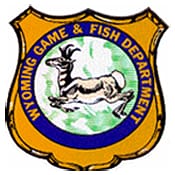On the Cutting Edge – Keeping Knives Less Sharp
By Greg Hallen
![march2010_knife[1] When you sharpen your knives in preparation for next hunting season, don't be afraid to put a little rougher edge on your blades.](https://www.ammoland.com/wp-content/uploads/2010/03/march2010_knife1.jpg)

CHEYENNE, WY –-(AmmoLand.com)- Now that many of the hunting opportunities are over for the year, you might have had recent opportunities to find out how your knives perform in the field for a variety of field dressing and other chores. Many of you might have found that your sharp knife just didn’t cut as well as you thought it should. If this is the case, perhaps the knives you use need a rougher edge.
I’ve been sharpening knives for a long time and have accumulated an embarrassing number of sharpening implements for sharpening any steel, including some of the extremely high alloy, stainless hunting knives I’ve acquired. I’ve also written several articles about knife sharpening that have been published in local and national publications. However, for the hunter, I’d like to share an important aspect I learned about cutting edges for knives intended for field use.
About eight years ago I was out videotaping pheasant hunting activities and asked a friend of mine who had just killed a pheasant to field dress the bird with my pocketknife. I thought it was a good opportunity to show him how effortlessly a scary-sharp edge could cut. To my surprise, my friend had trouble cutting through the cartilage of a leg joint. So I gave it a try, and I had the same difficulty because the edge kept sliding over the smooth and hard cartilage. I figured out why it was slipping, and it was because I had finished honing the blade on an extra-fine ceramic sharpening stone, and this results in a very sharp, microscopically smooth, polished edge. And it was because of the smooth edge that the edge was sliding rather than biting into the cartilage.
Then and there I learned that while a blade with a very smooth edge is preferred for woodcarving and shaving, it helps to use a blade with a rougher edge for most cutting chores. I’m not talking about serrated edges, which are good for only a couple of things, like cutting rope. I’m talking about a “microscopically” rougher edge that gives the blade some “bite,” and that’s why I now finish up the edges of hunting knives on an extra-fine diamond stone, and for an even more aggressive cutting edge, finish up sharpening on a fine diamond stone. Not all sharpening devices give the same results. For example, sharpening on a medium-grit ceramic stone or rod polishes the edge to some degree, and doesn’t give the same microscopic edge roughness that diamonds will.
So, when you sharpen your knives in preparation for next hunting season, don’t be afraid to put a little rougher edge on your blades. You’ll be glad you have a knife with a little “bite” to it!
